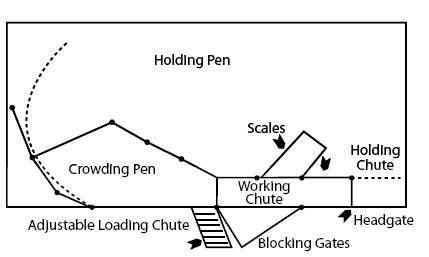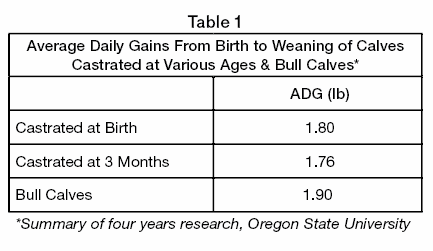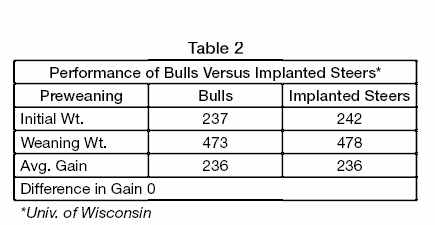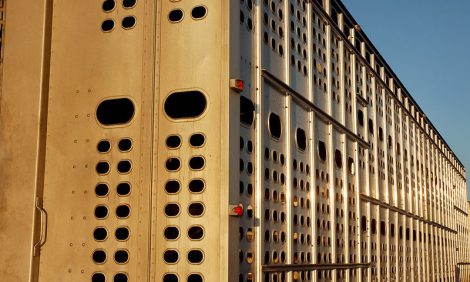



Castration of Beef Calves
By Clyde Lane, Jr., Professor – Animal Science; Richard Powell, Program Leader – Western Region; Brian White, Area Livestock Agent – Western Region; and Steve Glass, County Director – Decatur County and published by the University of Tennessee.Castration is a management practice that should be performed on all male beef calves. Castration, the removal of the testicles of a bull by either surgical or non-surgical methods, is recommended because of consumer preference, for economic considerations and to improve the temperament of cattle.
Stress from castration can be minimized by performing the procedure when the calf is small and sexually immature. Also, the stress is minimized by performing the procedure in a well-designed and properly working handling facility. The beef cattle-handling facility should include: 1) headgate; 2) holding chute; 3) working chute; 4) crowding pen; 5) loading chute and 6) scales.
Producers desiring to upgrade current facilities or construct or purchase new facilities may apply for a cost-share through the Tennessee Agricultural Enhancement Program administered by the Tennessee Department of Agriculture. Premise identi. cation and Beef Quality Assurance certi. cation are prerequisites for applying for the funds. Approval of the request must be received before items are purchased.
The working and holding chutes should be a maximum of 26 inches wide (Figure 1).
Restraining the calf is important, regardless of the method of castration. The calf can be restrained by: 1) letting the calf stand in a chute with the tail held directly over the back by another person; 2) laying the calf on a table or 3) stretching the calf out on its side on the ground. The . rst two restraining methods are much safer for both the calf and the handler.


The castration of calves is an economically important management practice for the cow-calf producer. Feeder cattle buyers prefer the quieter dispositions of steers and the ease with which steers are handled while in the feedlot. The preference for steers is re. ected in the prices paid for bulls and steers.
Reports from Tennessee livestock markets reveal that bull calves usually sell for less per pound than steers of comparable quality and weight. The amount of the discount for bulls may be from zero up to as much as $10 or more per hundredweight. The amount will vary depending on time of year, weight of calf, feeder cattle supplies, etc. Generally, the discount is $5 to $7 per hundred pounds. This amounts to a discount of $25 to $35 on a 500-pound bull calf. The losses from not using this management practice could pay for an adequate handling facility.
Opinions vary as to the best time to castrate the calf. Research data generally indicate that little difference in . nal weaning weight is found whether a calf is castrated early and implanted or castrated late. Calves castrated later usually have a greater setback from the surgery. The result is little difference in final weaning weight.
Bulls that weigh more than 500 pounds generally bleed more and are affected more by stress and infection. However, in some beef operations, it is not practical to castrate calves at an early age because potential herd bull prospects will not be selected until after performance records are obtained following weaning.
Table 1 illustrates the effect of time of castration on average daily gain.

Research conducted at the University of Wisconsin has shown that bull calves can be castrated at a young age without losing the weight-gaining advantage, provided they are implanted at the time of castration. Note there was no difference in weight gain between bulls and implanted steers in research reported in Table 2.

The best times to castrate are in the spring and fall when flies and maggots are less likely to increase irritation and infection of the wound. Several methods have been used to remove the testicles; however, not all methods allow for adequate drainage. A brief discussion of the four castration techniques is presented below.
Surgical Castration
The testicles are removed from the bull by making an opening in the scrotum. The best method is to use the Newberry knife, since it gives excellent drainage and is much safer to the bull and to the handler as well. The danger of severing the large saphenous vein, which is found near the surface of the inside of the leg, is completely eliminated. The scrotum is properly disinfected and the testicles are pushed up toward the body as far as possible with one hand. The Newberry knife (Figure 2) is held in the other hand and is positioned with the blade open and exposed along the sides of the scrotum halfway up the scrotum, for good drainage. Insert the blade from side to side (not front to rear), squeeze the handles and cut through the septum that separate the two testicles and pull down and away from the bull. This leaves the top . aps of scrotum and the exposed testicles. Grasp each testicle individually and apply tension on the cord. Place an emasculator with crimper on the cord as high as possible and leave it on for about 15 seconds to reduce hemorrhage. Apply an antiseptic powder to help prevent bacterial infection.Another surgical method is to cut off the lower one-third of the scrotum. After the testicles are exposed, they should be grasped and extended one at a time while pushing back the connective tissue surrounding the cord (See Figure 3). Once the cord is exposed, sever it as high as possible by using an emasculator with a crimper or by scraping with a knife blade. Do not cut the cord and associated blood vessels, as excessive bleeding may occur. In young calves, the testicle may be grasped and pulled until the cord breaks.
Elastration
This method is one in which a rubber band is placed around the scrotum at its neck. The rubber band is applied using a forceps-like instrument. Prime the band with several squeezes of the handle, while shielding the eyes with the cupped hand. Now stretch the rubber band enough for it to be placed over the scrotum. As the rubber band is placed on the scrotum, it is essential that the testicles be pulled down so the rubber band is between the testicles and the point where the scrotum attaches to the groin. Release tension on the band and remove the elastrator. This cuts off the blood supply and the scrotum and testicles slough off in about three weeks. If both testicles are not palpated below the band, cut the band with a knife and repeat the procedure. This is the least desirable of all the bloodless methods of castration because of the danger of tetanus. If this method is used, it should be used on calves less than one month of age.
A newer version of the elastrator uses a heavy rubber loop applied with a wench device and secured with a metal clip. This is used with larger calves. It is strongly recommended to administer a tetanus toxoid at the time of application.
Emasculatome
This is a method of bloodless castration for older calves. This technique is performed with the calf standing and the tail held over the animal’s back. Push the testicle down in the scrotum and position the cord to one side. The emasculatome is then positioned approximately one-third of the way across the scrotum and applied over the cord about 2 inches above the testicle (Figure 4). The emasculatome is left in place for approximately one minute. It is strongly suggested that the emasculatome be applied twice on each cord. Repeat the procedure on the other side of the scrotum. Do not apply the emasculatome all the way across the scrotum. The crushing of the blood and nerve supply is suf. cient to make the testicle atrophy and become non-functional. Care must be exercised to be sure the cord is crushed and that no other damage is done. If the cord has been missed, repeat the procedure.Success with this procedure requires that the emasculatome be in good working order. If the emasculatome appears old or sprung, it may not work properly. This method is slow, requires strength and is often not 100 percent effective.

Summary
Castration should be a standard practice for all beef producers. Several techniques for castration are available; however, surgical castration using the Newberry knife is preferable. For additional information on castration, contact your local Extension agent.January 2007


